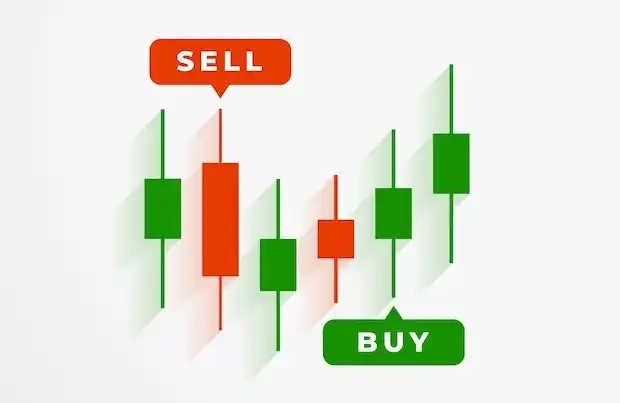Coinbase: Understanding the EigenLayer AVS Ecosystem in One Article
Original title: "Understanding the EigenLayer AVS Landscape"
Original author: Coinbase
Original translation: Lucy, BlockBeats
TL;DR:
· EigenLayer* is a protocol built on Ethereum that introduces restaking, a new primitive in cryptoeconomic security that has become the dominant narrative in the Ethereum community.
· Restaking through EigenLayer enables developers to leverage Ethereum's existing economic security infrastructure (i.e., validator sets and staked ETH) to bootstrap new active verification services (AVS).
· Compared to the impact of traditional cloud platforms and SaaS solutions on web2 development, we believe that the emergence of EigenLayer and its thriving AVS ecosystem has opened up the "verifiable cloud" paradigm for web3.
· As staking and shared security models evolve, their impact on the blockchain ecosystem will become increasingly evident, driven by growing demand from stakers and developers seeking to unlock new opportunities on-chain.

Note: Projects backed by Coinbase Ventures portfolio companies are denoted by an asterisk (*) when first cited in the article below.
What is EigenLayer?
EigenLayer is a protocol built on Ethereum that introduces restaking, a new primitive for cryptoeconomic security. At its core, EigenLayer consists of a series of smart contracts that allow users to choose to “re-stake” their staked ETH or Liquid Staking Tokens (LST) to launch new Proof-of-Stake (PoS) networks and services within the Ethereum ecosystem in exchange for additional staking yield/rewards.
The core goal of EigenLayer is to enable a new era of permissionless innovation and free-market governance by reducing the complexity for developers when building and bootstrapping these networks from scratch. This is achieved by leveraging Ethereum's established trust guarantee and economic security infrastructure.
EigenLayer was launched in 2023, enabling users to re-stake their staked ETH or LST. As of May 14, 2024, over 4.9 million ETH (valued at over $15 billion) has been re-staked into the EigenLayer protocol.

Source: EigenLayer Whitepaper
Why is this important?
The Ethereum network utilizes a Proof-of-Stake (PoS) consensus mechanism, where node operators stake their ETH and run validator software to secure the network (i.e. store data, process transactions, add new blocks to the beacon chain, etc.) in exchange for rewards (i.e. a share of network fees). If node operators fail to perform their validation functions or misbehave, they risk losing their staked ETH (i.e. slashing).
Today, developers seeking to build protocols on top of Ethereum that require external operators are typically required to bootstrap and secure their own PoS network. Doing so is a difficult task that requires developers to design/launch a token, incentivize node operators to stake the token and run validator software, and implement a fair reward distribution and slashing mechanism. Furthermore, according to EigenLayer, forcing each new protocol to bootstrap its own PoS network would fragment Ethereum’s security and drain value (i.e. in the form of staked tokens) away from the Beacon Chain.
How does EigenLayer work?
EigenLayer seeks to address the aforementioned challenges by enabling developers to leverage Ethereum’s existing validator set and stake ETH from day one through an approach called “shared security.” Shared security and staking mechanisms are not only expected to lower the barrier to entry for developers and foster rapid innovation within the Ethereum ecosystem, but also aim to create new avenues for Ethereum stakers to actively participate in multiple networks that require cryptoeconomic collateral and external operators, thereby maximizing their reward potential.
EigenLayer’s protocol architecture consists of four key components: Adapters, Operators, Active Validation Services (AVS), and AVS Consumers.
· Staker: An individual or entity that stakes their staked ETH or LST to extend security to services in the EigenLayer ecosystem, called Active Validation Services (AVS).
· Operator: An entity that runs dedicated node software and performs AVS validation tasks built on EigenLayer in exchange for predefined rewards. Operators register with EigenLayer, allowing re-stakers to delegate to them, and then opt-in to provide validation services for various AVS. It is important to note that operators must comply with the slashing conditions of each AVS.
· Active Verification Service (AVS): Any system that requires a unique distributed verification method for verification. AVS can take many forms, including data availability layers, shared sequencers, oracle networks, bridges, co-processors, application encryption systems, etc.
· AVS Consumer: An end user or application that consumes the services provided by EigenLayer.
The "Verifiable Cloud" of Cryptocurrency
Sreeram Kannan, founder of EigenLayer, is often quoted as saying "EigenLayer is the cryptographically verifiable cloud", but what does this actually mean? In traditional cloud architectures, centralized entities provide computing, storage, and hosting services for various web2 SaaS solutions. These SaaS solutions are generally divided into two categories: horizontal SaaS (i.e., generalizable software solutions that typically target a wide range of end users regardless of their industry) and vertical SaaS (i.e., software solutions that target a specific niche, use case, or industry standard).
Compared to the transformation of web2 development by cloud platforms and SaaS solutions, we believe that the emergence of EigenLayer and AVS provides a similar paradigm shift for the blockchain ecosystem. EigenLayer aims to provide crypto-economic security services for AVS (such as "web3 SaaS"). Similar to the emergence and widespread adoption of SaaS solutions in the Web2 environment, we see a similar trend in the emergence of AVS, driven by increased demand for protocols and dapps.
Overall, EigenLayer's "shared security system" aims to drive rapid innovation on the chain while providing enhanced decentralization, trust, and transparency, thereby redefining the future of "verifiable cloud" computing.
The EigenLayer AVS Landscape Today
On April 9, 2024, EigenLayer launched the Operator and AVS modules on mainnet, and now has a vibrant Operator ecosystem (200+ as of May 14, 2024), as well as an AVS pipeline expected to launch in the coming months (11 today). Similar to the traditional SaaS space, we expect AVS to naturally segment into different categories (i.e. horizontal and vertical specific).

This list is not exhaustive and includes Coinbase Ventures portfolio companies.
With the above framework in mind, we see the following landscape for EigenLayerAVS (today):
“Horizontal” AVS
· Developer Services: Frameworks and tools to help developers build and deploy PoS networks (e.g. AVS, L1/L2, etc.) that require shared security infrastructure (e.g. Othentic*, Blockless, Ethos)
· Operator Services: Services to help AVS operators manage their node infrastructure, validator tasks, and/or staking operations (e.g. Supermeta)
· Payment Services: Services for managing the delivery of payments (i.e. AVS rewards) to transferors (e.g. Anzen)
“Vertical” AVS
Rollup Services: Support for the development of infrastructure services that extend Ethereum (e.g., rollups), while inheriting the security from Ethereum’s web of trust. Examples include: Data Availability (e.g., EigenDA, NearDA), Shared Ordering (e.g., Espresso*, Radius), Rollup-as-a-Service (e.g., Caldera, AltLayer), or Interoperability (e.g., Omni*, Polymer*, Hyperlane, Polyhedra)
Decentralized Networks: Networks that require a distributed validator mechanism. Examples include Oracles (e.g., eOracle), Proof Verification (e.g., Aligned Layer), DePIN (e.g., WitnessChain, OpenLayer), Security Monitoring (e.g., Drosera), or Smart Contract Policy Engines (e.g., Aethos)
Coprocessors: Services that provide developers with cost-effective and verifiable off-chain computational power. Examples include database coprocessors (e.g. OpenDB), ZK coprocessors (e.g. Lagrange, Brevis, Space and Time), Trusted Execution Environments and cryptographic coprocessors (e.g. Automata, Fairblock), or AI reasoning (e.g. Ritual)
Applied Cryptography: Services for creating strong cryptographic systems. Examples include fully homomorphic encryption (e.g. Fhenix), multi-party computation (e.g. Silence Laboratories), or threshold cryptography (e.g. Mishti Network)
MEV Governance: An emerging service that allows block proposers to make additional trusted commitments on block inclusion and ordering
Application Layer
On top of AVS, we expect new on-chain applications to emerge that are designed to leverage the unique economic security properties of EigenLayer.
Emerging examples include Rollups, Liquid Restaking Tokens (LRT) and related LRTFi applications (i.e., DeFi protocols that use LRT as an underlying source of collateral), social and gaming applications, decentralized physical infrastructure networks (i.e., DePIN), and identity/privacy-preserving applications.
Future Outlook
As staking and shared security models evolve, their impact on the blockchain ecosystem becomes increasingly evident. Growing demand from stakers/validators seeking to maximize their yield potential and developers seeking to accelerate innovation at the infrastructure level has the potential to unlock new opportunities on-chain. Additionally, while EigenLayer is the first to launch a staking protocol, we are seeing similar mechanisms emerge in other ecosystems: Bitcoin (e.g. Babylon Chain), Solana (e.g. Solayer, Cambrian, Fragmetric), IBC (e.g. Picasso Network*), full-chain staking (e.g. Exocore), and multi-asset staking (e.g. Karak).
That said, while staking and shared security models open up many exciting opportunities on-chain, stakers need to understand the risks that may arise from smart contract security risks or unexpected slashing events. Notably, at the time of writing, EigenLayer’s slashing and payout (i.e. AVS rewards) mechanism is not live yet, but will be available later this year.
Overall, Coinbase Ventures is excited about the potential for staking and shared cryptoeconomic security. If you are building an AVS management platform (i.e., consider an API management-like platform for developers to manage their AVS endpoints), an AI coprocessor, or AVS related to MEV management (on EigenLayer or other heavy protocols), we would love to hear from you.
「Original link」
Welcome to join the official BlockBeats community:
Telegram Subscription Group: https://t.me/theblockbeats
Telegram Discussion Group: https://t.me/BlockBeats_App
Official Twitter Account: https://twitter.com/BlockBeatsAsia


 Forum
Forum Finance
Finance
 Specials
Specials
 On-chain Eco
On-chain Eco
 Entry
Entry
 Podcasts
Podcasts
 Activities
Activities
 OPRR
OPRR








